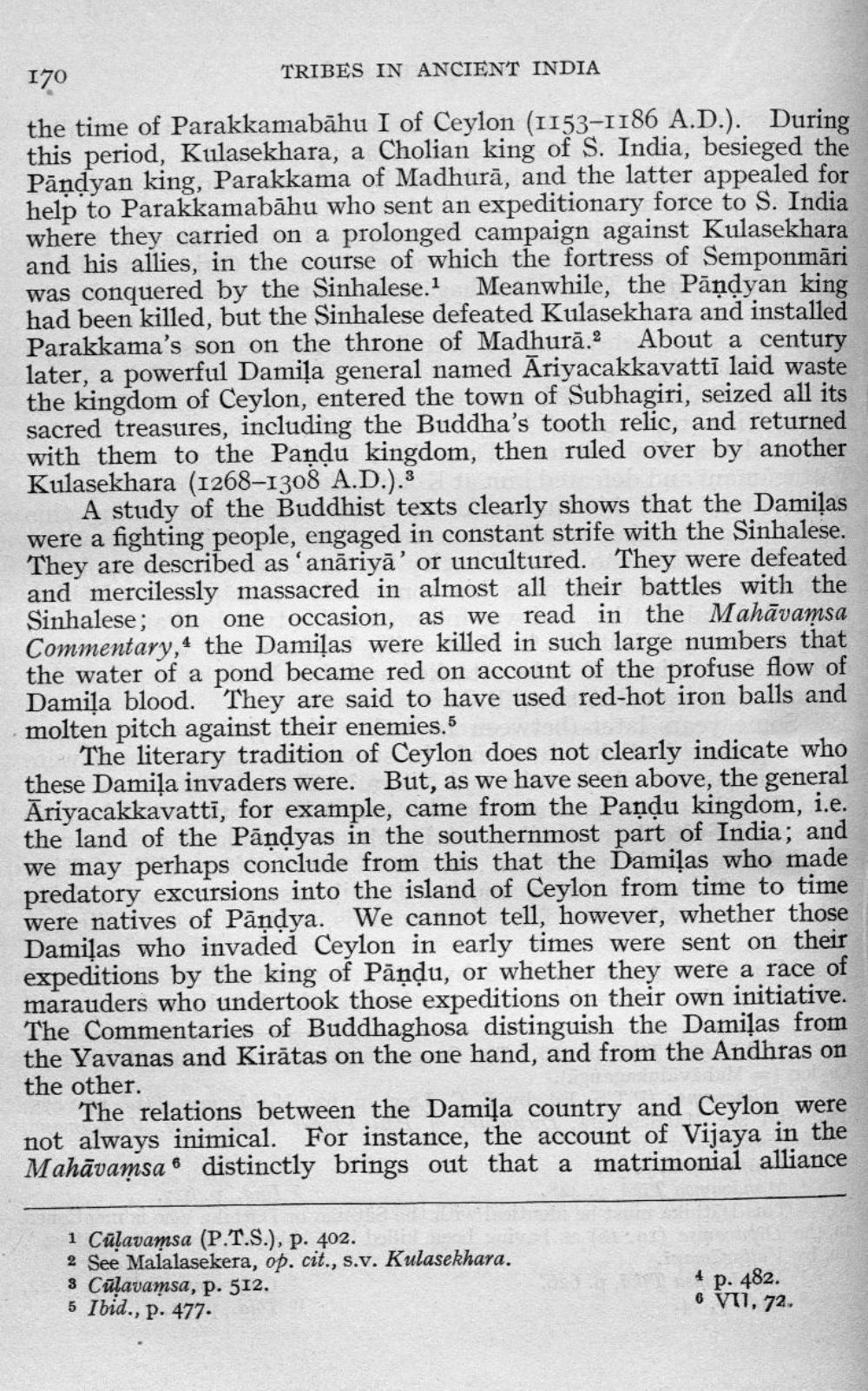________________
170
TRIBES IN ANCIENT INDIA the time of Parakkamabāhu I of Ceylon (1153-1186 A.D.). During this period, Kulasekhara, a Cholian king of S. India, besieged the Pāņdyan king, Parakkama of Madhurā, and the latter appealed for help to Parakkamabāhu who sent an expeditionary force to S. India where they carried on a prolonged campaign against Kulasekhara and his allies, in the course of which the fortress of Semponmāri was conquered by the Sinhalese.1 Meanwhile, the Pāndyan king had been killed, but the Sinhalese defeated Kulasekhara and installed Parakkama's son on the throne of Madhurā.2 About a century later, a powerful Damiļa general named Ariyacakkavattī laid waste the kingdom of Ceylon, entered the town of Subhagiri, seized all its sacred treasures, including the Buddha's tooth relic, and returned with them to the Pandu kingdom, then ruled over by another Kulasekhara (1268-1308 A.D.).3
A study of the Buddhist texts clearly shows that the Damiļas were a fighting people, engaged in constant strife with the Sinhalese. They are described as 'anāriyā' or uncultured. They ere defeated and mercilessly massacred in almost all their battles with the Sinhalese; on one occasion, as we read in the Mahāvamsa Commentary, 4 the Damiļas were killed in such large numbers that the water of a pond became red on account of the profuse flow of Damiļa blood. They are said to have used red-hot iron balls and molten pitch against their enemies.5
The literary tradition of Ceylon does not clearly indicate who these Damiļa invaders were. But, as we have seen above, the general Āriyacakkavattī, for example, came from the Pandu kingdom, i.e. the land of the Pāņdyas in the southernmost part of India, and we may perhaps conclude from this that the Ďamiļas who made predatory excursions into the island of Ceylon from time to time were natives of Pāņdya. We cannot tell, however, whether those Damiļas who invaded Ceylon in early times were sent on their expeditions by the king of Pāņdu, or whether they were a race of marauders who undertook those expeditions on their own initiative.
The Commentaries of Buddhaghosa distinguish the Damilas from the Yavanas and Kirātas on the one hand, and from the Andhras on the other.
The relations between the Damiļa country and Ceylon were not always inimical. For instance, the account of Vijaya in the Mahāvamsam distinctly brings out that a matrimonial alliance
1 Cūlavamsa (P.T.S.), p. 402. 2 See Malalasekera, op. cit., s.v. Kulasekhara. 3 Culavamsa, p. 512. 5 Ibid., p. 477.
4 p. 482. 6 VTi, 72.




